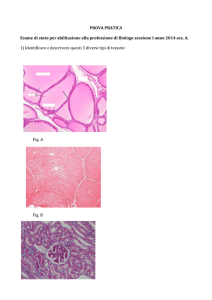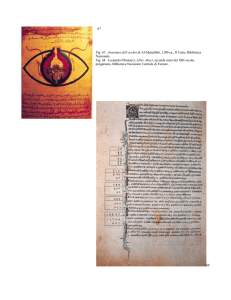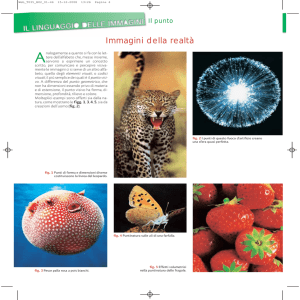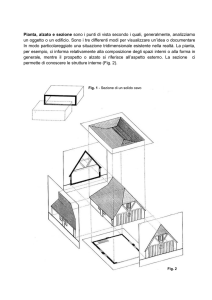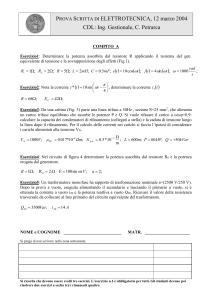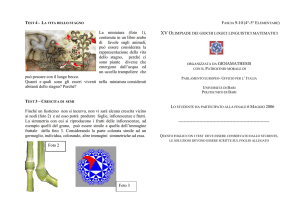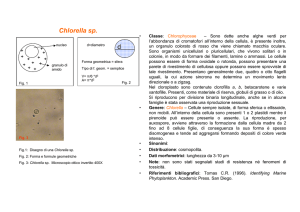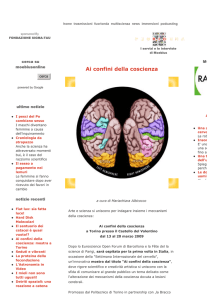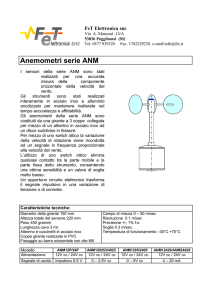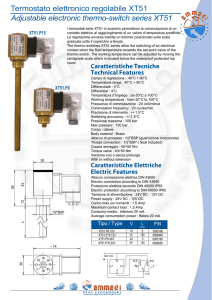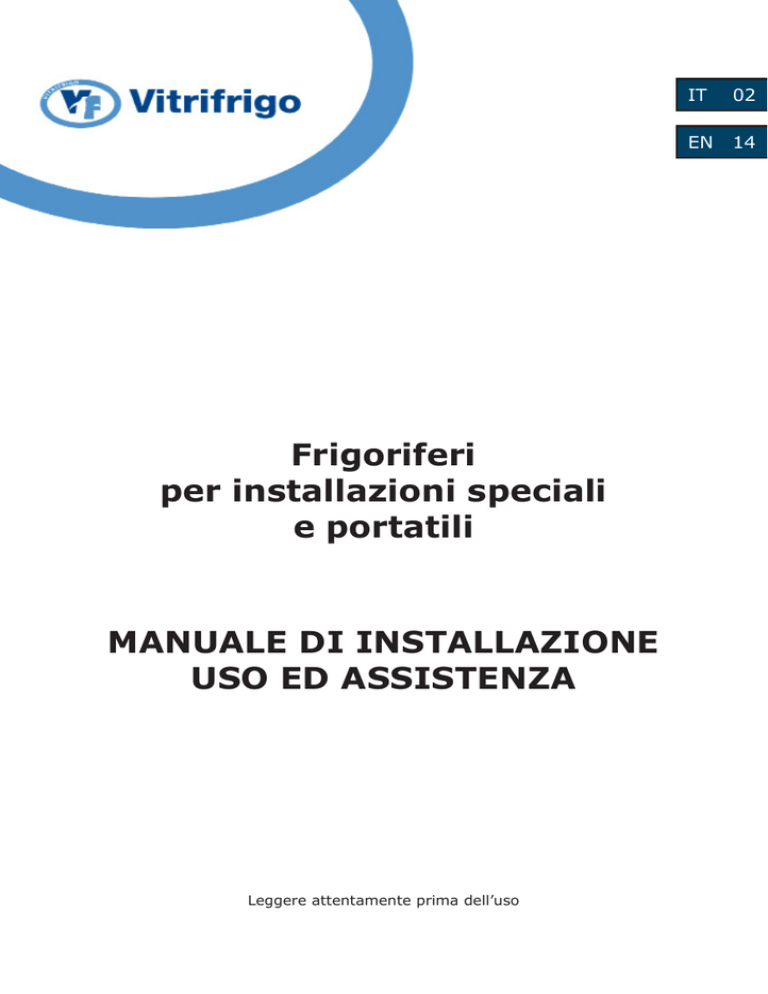
Frigoriferi
per installazioni speciali
e portatili
MANUALE DI INSTALLAZIONE
USO ED ASSISTENZA
Leggere attentamente prima dell’uso
IT
02
EN
14
MANUALE DI INSTALLAZIONE
USO ED ASSISTENZA
IT
Frigoriferi per installazioni speciali
e portatili
Leggere attentamente prima dell’uso
INDICE
1.INTRODUZIONE
2.
AVVERTENZE GENERALI
3.
INFORMAZIONI GENERALI
4.
REGOLAZIONE DELLA TEMPERATURA
4.1
4.2
4.3
4.4
5.
INFORMAZIONI UTILI
6.
COSA FARE SE IL FRIGO NON FUNZIONA
7.
AVVERTENZE PARTICOLARI
8.
ISTRUZIONI DANFOSS BD35/BD50F 12-24 Vcc
9.
ISTRUZIONI DANFOSS BD35/BD50F
12-24 Vcc / 110-240 Vca
2
3.1
3.2
3.3
3.4
3.5
3.6
3.7
5.1
5.2
5.3
6.1
6.2
6.3
7.1
7.2
Scopo del manuale
Identificazione del costruttore
Descrizione del frigorifero per installazioni speciali
Descrizione del frigorifero portatile Installazione
Pulizia del frigorifero
Collegamento elettrico
Termostato
Termostato
Termostato
Termostato
meccanico
led
digitale
elettronico “C29”
Sostituzione della lampadina
Sbrinamento dell’apparecchio
Accessori
L’apparecchio non funziona
Frigorifero rumoroso
Frigorifero con resa insufficiente
Frigoriferi 12/24Vcc
Frigoriferi 12/24Vcc e 230Vca
1.INTRODUZIONE
IT
Gentile cliente:
Nel ringraziarLa di aver scelto un nostro prodotto la VITRIFRIGO
s.r.l. si augura che Lei possa rimanere completamente
soddisfatto dell’acquisto effettuato.
Il presente manuale è considerato parte integrante del frigorifero
e deve seguire il percorso di vendita fino all’utilizzatore e che
la Vitrifrigo s.r.l. ne vieta la riproduzione di qualsiasi parte.
Ogni frigorifero, prima di lasciare il nostro stabilimento, è
sottoposto a severi collaudi e controlli che ne garantiscono il
corretto funzionamento.
Per ulteriori informazioni e chiarimenti potrà interpellare i
nostri centri assistenza o direttamente i nostri uffici.
Vitri Alceste
3
2.
IT
AVVERTENZE GENERALI
− Leggere attentamente questo manuale prima di utilizzare il frigorifero.
− Qualora questo apparecchio dovesse sostituirne uno di vecchio tipo si raccomanda
di rendere inservibile l’eventuale serratura prima di rottamarlo.
− Verificare che l’imballo sia integro, in caso contrario segnalarlo al trasportatore.
− Procedere allo sballaggio ed alla installazione del prodotto operando con massima
cautela; si consiglia, per evitare ferite accidentali, l’uso di guanti protettivi.
− Dopo aver sballato l’apparecchio assicurarsi che non sia danneggiato. Eventuali
danni devono essere segnalati al rivenditore entro e non oltre le 24 ore dalla data
di acquisto.
− Il prodotto deve essere usato esclusivamente per la conservazione di cibi e
bevande.
− L’apparecchio deve essere posizionato lontano da fonti di calore assicurando al
medesimo sufficiente aerazione (vedi indicazioni successive).
− Si consiglia di attendere almeno un’ora prima di mettere in funzione il frigo per
dar modo al circuito refrigerante di essere completamente efficiente.
− Prima di collegare il prodotto verificare che la tensione di rete corrisponda a
quanto riportato sulla targhetta di identificazione dell’apparecchio o a quella
indicata sulla targhetta posta sul compressore.
− Ad installazione eseguita verificare che l’apparecchio non appoggi sul cavo di
alimentazione.
− Per eventuali problemi di funzionamento rivolgersi presso il nostro centro
assistenza più vicino; in ogni caso avvalersi di personale qualificato.
− Prima di eseguire qualsiasi operazione di manutenzione o pulizia, disinserire la
presa di corrente.
− Evitare di introdurre nel comparto a bassa temperatura liquidi in contenitori di
vetro.
− Non gettate l’imballo del vostro apparecchio ma selezionate i materiali secondo
le prescrizioni locali relative allo smaltimento dei rifiuti.
− Il presente prodotto non deve essere gettato nei rifiuti urbani ma deve
essere smaltito come raccolta separata. Contattare i centri di raccolta Rifiuti
Apparecchiature Elettriche ed Elettroniche (RAEE) presenti sul vostro territorio
oppure renderlo al venditore all’atto dell’acquisto di un’apparecchiatura nuova
equivalente.
− Il prodotto, se non smaltito correttamente, può avere potenziali effetti dannosi
sull’ambiente e sulla salute umana dovuti a determinate sostanze presenti al suo
interno.
− Il simbolo riportato a fianco indica che il prodotto non può essere smaltito
come rifiuto urbano.
− Lo smaltimento abusivo o non corretto del prodotto comporta sanzioni giuridiche
di tipo amministrativo e/o penale severe come previsto dalle leggi vigenti.
− È fatto assoluto divieto di utilizzare il frigorifero per usi diversi da quelli previsti.
− Curare sempre la perfetta pulizia e tenere sempre in efficienza i dispositivi di
sicurezza.
− Mantenere libere da ostruzioni le aperture di ventilazione nell’involucro
dell’apparecchio e/o struttura da incasso.
− Non rimuovere mai le protezioni (carter) del frigorifero.
− Eseguire sempre le verifiche, i controlli e le manutenzioni programmate descritte
in questo manuale.
− L’apparecchio non deve essere esposto alla pioggia.
− Adatto per l’uso nei campeggi.
4
3.
3.1
INFORMAZIONI GENERALI
IT
Scopo del manuale
Questo manuale è relativo ai frigoriferi per installazioni speciali (adatti sia per la
nautica che per l’automotive) e portatili. Questo manuale intende fornire una guida per
il corretto e sicuro impiego degli stessi e per la loro razionale manutenzione. Al fine di
imparare in breve come far funzionare ed utilizzare il frigorifero in vostro possesso è
necessario leggere attentamente questo manuale di uso e manutenzione sin dal primo
utilizzo. Il buon funzionamento del frigorifero dipende anche da una manutenzione
efficiente ed efficace. La conoscenza dei lavori di manutenzione è, perciò, necessaria. Le
indicazioni per l’uso indicano tutte le operazioni di avvio, di arresto e di funzionamento.
Il frigorifero è stato costruito conformemente a tutti i requisiti di sicurezza previsti
dalle direttive in materia, pur tuttavia, la sicurezza massima dell’utente dipende da
una attenta lettura di questo manuale e da una pulizia e manutenzione costante ed
attenta. Alcune informazioni o figure di questo manuale potrebbero mostrare dettagli
e particolari che possono differenziarsi leggermente da quelle del frigorifero in vostro
possesso, senza però che le informazioni essenziali vengano modificate. In base al
costante miglioramento, il frigorifero potrà mostrare variazioni che non sono contenute
in questo manuale. Eventuali modifiche appariranno, secondo le necessità nelle
successive versioni del manuale.
3.2
Identificazione del costruttore
Il frigorifero è progettato e prodotto esclusivamente presso la :
Vitrifrigo s.r.l.
Via Della Produzione, 9
61020 Montecchio (PU)
Tel. +39 0721 491080
Fax. +39 0721 497739
E-Mail. [email protected]
www.vitrifrigo.com
3.3
Descrizione del frigorifero per installazioni speciali con apertura dall’alto
(fig 2 a)
A
Sensore inclinometro
B
Porta/Coperchio
C
Pannello frontale
D
Perno
E
Evaporatore
F
Chiusura a cricchetto
G
Termostato
L’etichetta riportante matricola e dati tecnici è posizionata all’interno del
frigo, nella parte superiore del lato destro. Le prime tre cifre della matricola
identificano l’anno e la settimana della costruzione. La rumorosità della
macchina è inferiore di 70dB(A).
5
3.3
IT
3.4
Descrizione del frigorifero per installazioni speciali con apertura frontale
(fig 2 b)
A
Sensore inclinometro
B
Porta frontale
C
Maniglia
D
Termostato
E
Luce interna
F
Vaschette
Descrizione del frigorifero portatile (fig. 3)
A
Cestello
G
B
Chiusura cricchetto
H
Mascherina con termostato led
Termostato meccanico (solo C26)
C
Evaporatore
I
Interruttore (solo C26)
D
Vite fissaggio staffa
J
Maniglia
E
Staffa di fissaggio
K
Presa 12/24 Vcc - 230 Vca
F
Mascherina con termostato digitale
3.5
Installazione
Assicurarsi che l’apparecchio non sia danneggiato. Eventuali danni di trasporto
devono essere segnalati tempestivamente al rivenditore e comunque non oltre le 24
ore successive alla consegna. Manipolare il prodotto con la massima attenzione. Nei
frigoriferi ad installazione speciale assicurare al gruppo frigorifero sufficiente aerazione
predisponendo nel mobile contenitore due aperture, una sul lato destro in corrispondenza
del gruppo refrigerante, la seconda sul lato sinistro sempre in corrispondenza del
gruppo refrigerante. Tali aperture dovranno avere una superficie non inferiore ai 300
cmq. Per i frigoriferi portatili lasciare una sufficiente aerazione sul lato ove è presente
la mascherina (fig 3). Installare il frigo lontano da fonti di calore in luogo asciutto e ben
aerato. Lasciare fermo l’apparecchio per almeno un’ora prima di metterlo in funzione.
In tale intervallo procedere alla prima pulizia.
3.6
Pulizia del frigorifero
Prima di procedere alla pulizia assicurarsi che il frigorifero non sia collegato all’impianto
elettrico. In caso contrario disinserire la spina dalla presa di corrente.
Esterno
Lavare l’esterno del frigorifero con acqua tiepida, ripassare con acqua fredda ed
asciugare con un panno morbido. Evitare l’uso di prodotti abrasivi.
Interno
Togliere il cestello e procedere alla pulizia utilizzando acqua tiepida con l’aggiunta di
bicarbonato di sodio o aceto. Sciacquare ed asciugare accuratamente con un panno
morbido. Evitare tassativamente l’uso di prodotti abrasivi, detergenti o saponi.
Condensatore
E’ consigliabile effettuare, almeno una volta l’anno, la pulizia del condensatore (fig.1)
per mezzo di una aspirapolvere o di un pennello asciutto.
In caso di prolungato inutilizzo dell’apparecchio, onde evitare la formazione di muffe
6
o cattivi odori, togliere la spina, vuotarlo completamente, procedere alla pulizia
dell’interno e lasciare la porta semiaperta.
3.7
Collegamento elettrico
Prima di collegare il prodotto assicurarsi che la tensione di alimentazione corrisponda a
quella riportata sulla targhetta di identificazione o a quella indicata sulla targhetta posta
sul compressore. I modelli portatili ed a installazione speciali si possono alimentare
con:
• la sola alimentazione a batteria 12/24Vcc
• con l’alimentazione a batteria 12/24Vcc e la tensione di rete 110-230Vca 50/60Hz
(su richiesta)
4.
REGOLAZIONE DELLA TEMPERATURA
Ogni frigorifero è equipaggiato di un termostato per il mantenimento automatico della
temperatura. A seconda del modello abbiamo:
4.1
Termostato meccanico
Per scegliere la temperatura desiderata agire sulla manopola di regolazione. Quando
la manopola è in posizione ‘OFF’ il frigorifero non funziona. Spostando la manopola in
senso orario il frigorifero entra in funzione. Ruotando la manopola sempre in senso
orario si ottengono temperature sempre più fredde.
4.2
Termostato led
Il termostato elettronico “LED” è provvisto di due comandi a pulsante:
• Il comando di accensione e spegnimento “ON/OFF”
”
• Il comando di regolazione della temperatura “
Premendo il comando contrassegnato con “ON/OFF” si ottiene alternativamente
l’accensione o lo spegnimento del frigorifero.
Per impostare la temperatura desiderata premere il comando contrassegnato con il
. Ad ogni pressione l’indicatore luminoso a LED scorre da sinistra verso
simbolo
destra, per le posizioni intermedie si avrà l’accensione dei due LED vicini.
Quando l’indicatore si trova a sinistra, il frigorifero è al minimo (più caldo) mentre ogni
posizione verso destra indica un aumento della temperatura (più fredda) di circa 3°C.
Per selezionare una temperatura più fredda premere ripetutamente il comando fino
all’accensione dell’indicatore luminoso più a destra (massimo freddo), la successiva
pressione realizza l’accensione dell’indicatore luminoso più a sinistra.
4.3
Termostato digitale
Il termostato DIGITALE consente di monitorare costantemente la temperatura interna
del frigo, l’accensione/spegnimento del compressore. L’utente dispone di un display e
di quattro tasti per il controllo dello stato e la programmazione dello strumento.
Al momento del collegamento dell’alimentazione il display comincia a
lampeggiare e si arresta visualizzando la temperatura attuale all’interno del
7
IT
IT
frigo.
Per default il termostato è impostato a 0°C. Se si desidera modificre i parametri:
• Premere il tasto SET velocemente (entro 5 sec.) 2 volte. La prima volta comparirà
la scritta “SET” e la seconda il valore “0” o precedentemente impostato.
o
modificare la temperatura che il frigo dovrà
Agendo sui pulsanti
raggiungere.
Premere il tasto FNC velocemente 2 volte per confermare la temperatura impostata.
La prima volta comparirà la scritta “SET” e la seconda la temperatura interna.
Il puntino posto sotto la scritta “OUT” indica che il compressore e la ventola sono
in funzione.
•
•
•
Per una razionale sistemazione e conservazione dei cibi attenersi alla tabella
sottostante:
Cibo
Tempo di
conservazione
Disposizione nel frigo
Carne e pesce pulito
(avvolgere in sacchetti o
fogli di plastica).
2 o 3 giorni
Sulla griglia sotto la zona
freezer.
Uova.
1 mese
Burro, margarine.
1 settimana
Cibi cotti, torte e minestre
(chiudere in recipienti
ermetici ed introdurre
dopo il raffreddamento).
3 o 4 giorni
Utilizzare gli scomparti
della controporta.
Utilizzare gli scomparti
della controporta.
Sulla griglia nella parte più
bassa del frigorifero.
Salumi
crudi,
pasta
fresca, creme, budini,
cioccolati, pasticcini alla
crema, lardo, pasticceria
secca, pomodori rossi.
3 o 4 giorni
Su qualsiasi griglia.
Bottiglie.
Negli appositi vani della
controporta.
Frutta e verdura.
Nella verduriera; nella
parte inferiore del frigo.
8
4.4
Termostato elettronico “C29”
Il modello “C29” ha un termostato elettronico dedicato provvisto dei comandi:
• accensione “ON/OFF”
• regolazione temperatura “-” e “+”
La caratteristica di questo termostato è la dotazione della presa USB per la ricarica di
telefoni cellulari o piccoli dispositivi elettronici (max 0.5A)
5.
INFORMAZIONI UTILI
5.1
Sostituzione della scheda luce led
Per effettuare la sostituzione della scheda luce led procedere come segue:
• Estrarre perpendicolarmente alla base il coperchio di protezione facendo attenzione
a non danneggiare i perni di fissaggio.
• Scollegare il cavo di alimentazione della luce.
• Sostituire la scheda luce led.
• Collegare il cavo di alimentazione.
• Riposizionare il coperchio.
5.2
Sbrinamento dell’apparecchio
Sarà opportuno procedere allo sbrinamento del frigorifero ogni qualvolta si riscontri uno
spessore di brina superiore a tre millimetri. Tale operazione è necessaria per garantire
un buon rendimento del frigorifero ed evitare maggior consumo di energia elettrica. Per
ottenere il completo sbrinamento del frigorifero ruotare la manopola del termostato in
posizione stop. Mantenere la porta aperta onde accellerare i tempi di sbrinamento.
Non rimuovere lo strato di brina utilizzando utensili metallici appuntiti o
taglienti che possono provocare forature nella piastra refrigerante con
conseguenze irreparabili per l’apparecchio.
Durante lo sbrinamento estrarre, se presenti, i cestelli o i cassetti scorrevoli. A fine
sbrinamento provvedere alla messa in funzione del frigorifero riportando la manopola
del termostato nella posizione desiderata.
5.3
Accessori
Alcuni frigoriferi ad installazione speciale presentano accessori interni come cestelli o
cassetti scorrevoli o divisori rimovibili. Quest’ultimi concedono la possibilità di dividere
la cella del frigorifero in due vani con diverse temperature. La cella con capienza
maggiore mantiene la configurazione “frigorifero” mentre la cella con capienza minore 9
IT
IT
si trasforma in “freezer”. Se il tramezzo viene rimosso, il vano viene considerato
“frigorifero” in quanto la temperatura non può raggiungere valori tali da considerarsi
“freezer”.
6.
COSA FARE SE IL FRIGO NON FUNZIONA
6.1
L’apparecchio non funziona
Controllare che:
− il termostato non sia nella posizione “OFF”.
− l’interruttore automatico dell’impianto elettrico non sia disinserito.
− il fusibile posto sul dispositivo elettronico del frigorifero sia integro.
− il cavo di alimentazione non sia interrotto.
− la batteria sia efficiente.
− la tensione sulla morsettiera del dispositivo elettronico del frigorifero sia
uguale a quella della batteria. Nel caso verificaste una caduta di tensione
superiore a 0,2-0,4V controllare che:
− la sezione del cavo che collega la batteria al dispositivo elettronico del
frigorifero sia di dimensione adeguata (vedi tabella su istruzioni Danfoss
cap.8-9).
− lungo la linea di alimentazione eventuali punti di giunzione non siano
deteriorati o non correttamente serrati.
− non vi siano ossidazioni sui poli della batteria e nei punti di contatto.
6.2
Frigorifero rumoroso
Controllare che:
− il frigorifero o il gruppo refrigerante sia ben livellato.
− il frigorifero non sia a contatto con mobili che possono causare vibrazioni.
− i tubi del circuito refrigerante posti sul retro non abbiano punto di contatto e
non vibrino contro l’apparecchio.
6.3
Frigorifero con resa insufficiente
Controllare che:
− la porta chiuda ermeticamente.
− il frigorifero non sia vicino a fonti di calore.
− che il frigorifero o il gruppo refrigerante remoto sia sufficientemente aerato.
− non vi sia sull’evaporatore un eccessivo riporto di brina.
− che il condensatore non sia intasato di polvere.
− che la ventola giri liberamente (nelle versioni con raffreddamento forzato).
− che l’interno non sia troppo stipato.
Se al termine di tali verifiche non si riuscisse ad ottenere un funzionamento
regolare, rivolgersi al servizio assistenza.
7.
AVVERTENZE PARTICOLARI
7.1
Frigoriferi 12/24Vcc
Installazione
Per l’installazione dei frigoriferi portatili è disponibile su alcuni modelli una staffa per il
fissaggio del frigorifero (fig 3).
Collegamento elettrico
Per i frigoriferi alimentati a 12Vcc o 24Vcc si consiglia di collegare gli impianti
direttamente alla batteria attenendosi alle corrispondenti istruzioni del compressore
10
Danfoss in dotazione (cap. 8).
7.2
IT
Frigoriferi 12/24Vcc e 230Vca
Collegamento elettrico
Si consiglia di collegare la linea di alimentazione a 12Vcc o 24Vcc direttamente alla
batteria attenendosi alle corrispondenti istruzioni del compressore Danfoss in dotazione
(cap. 9).
8.
ISTRUZIONI DANFOSS BD35/BD50F 12-24 Vcc
L’unità elettronica di controllo è un’apparecchiatura con possibilità di due diverse
tensioni di alimentazione. Ciò significa che la stessa unità è utilizzabile sia in sistemi con
alimentazione a 12V, sia a 24V. La tensione massima per sistemi a 12V è di 17V, mentre
quella per i sistemi a 24V è di 31,5V. La massima temperatura ambiente consentita è di
55°C. L’unità elettronica di controllo è dotata di una protezione termica incorporata che
entra in funzione in caso di surriscaldamento arrestando il compressore.
Installazione (fig. 4)
Collegare il connettore terminale dell’unità elettronica di controllo al terminale del
compressore. Montare l’unità sul compressore incastrando il coperchio sulla testa della
vite (1).
Alimentazione (fig. 4)
L’unità elettronica di controllo deve essere sempre collegata direttamente ai poli della
batteria (2). Connettere il polo positivo al + ed il negativo al -; diversamente l’unità
non potrà funzionare. L’unità è protetta contro l’inversione di polarità. Per proteggere
l’installazione deve essere sempre montato un fusibile (3) sul cavo + il più vicino
possibile alla batteria. Si raccomanda l’uso di un fusibile da 15A per il circuito a 12V e
di un fusibile da 7,5A per il circuito a 24V. Se si fa uso di interruttore generale (4), esso
va dimensionato per un minimo di 20A. Le dimensioni dei cavi raccomandate in fig. 5
devono essere rispettate. Evitare ulteriori connessioni al sistema di alimentazione per
evitare che eventuali cadute di tensione influiscano sulle impostazioni per la protezione
della batteria.
Protezione batteria (fig. 4)
L’arresto ed il riavvio del compressore dipendono dall’impostazione dei prescelti limiti di
tensione misurati sui morsetti + e - dell’unità elettronica di controllo. Le impostazioni
standard per i sistemi con alimentazione rispettivamente a 12V e 24V sono indicati in
fig. 6. Possono comunque essere impostati altri limiti (fig. 7) nel caso in cui si effettui
una connessione per mezzo di una resistenza (9) tra i morsetti C e P. Nelle applicazioni
per pannelli solari senza batteria si raccomanda un resistore da 220 kW. Nella modalità
AEO (ottimizzazione energetica mediante controllo adattativo) il compressore BD
adatterà sempre la propria velocità alla reale richiesta di resa frigorifera entro una
tensione d’esercizio casuale compresa tra 9,6 e 31,5 V.
Termostato (fig. 4)
Il termostato (7) va collegato tra i morsetti C e T. Senza resistenza nel circuito di
controllo il compressore con unità elettronica 101N0210 o 101N0220 ruoterà alla
velocità di 2.000 giri/min quando il termostato è inserito. Con il termostato collegato
direttamente al terminale C, l’unità elettronica 101N0300 adatterà la propria velocità
alla reale richiesta di resa frigorifera. È possibile ottenere altre velocità del compressore,
comprese nella gamma 2000-3500 giri/min, inserendo una resistenza (8) per la
regolazione della corrente (mA) nel circuito di controllo. I valori della resistenza per
diverse velocità del motore sono riportati in fig. 8.
Ventilatore (opzionale, fig. 4)
È possibile collegare un ventilatore (5) tra i terminali + ed F. Collegare il positivo al + e
il negativo ad F. Poiché la tensione di uscita tra i morsetti + ed F viene sempre regolata
11
IT
a 12V, va utilizzato un ventilatore a 12V sia nel caso di alimentazione a 12V che nel
caso di alimentazione a 24V! L’uscita per il ventilatore è in grado di fornire una corrente
continua di 0,5 Aavg. In fase di accensione è comunque permesso un assorbimento di
corrente maggiore per un tempo di 2 secondi.
LED (opzionale, fig. 4)
È anche possibile collegare un diodo LED da 10 mA (6) tra i morsetti + e D. Nel
caso in cui l’unità elettronica di controllo registri un errore di funzionamento, il diodo
lampeggerà un certo numero di volte. Il numero dei lampeggi dipende dal tipo di errore
registrato, con una durata per ciascun lampeggio di 1/4 di secondo. Alla sequenza di
lampeggi fa seguito una pausa senza lampeggiare, dopo di che la sequenza relativa
all’errore in questione verrà ripetuta ogni 4 secondi.
Numero lampeggi
Tipo di errore
5
Arresto termico dell’unità elettronica. Se il sistema di refrigerazione è stato sottoposto a carico eccessivo o se la temperatura ambiente è
troppo elevata, l’unità di controllo si surriscalderà.
4
Velocità del motore troppo bassa. Se il sistema di refrigerazione viene sottoposto a carico eccessivo, il motore non è in grado di mantenere
la velocità minima di 1.850 giri/min
3
Errore nell’avviamento del motore. Il motore è bloccato o la presione
differenziale nel sistema di refrigerazione è troppo alta (> 5bar)
2
Arresto del ventilatore per sovracorrente.Il ventilatore assorbe
dall’unità elettronica di controllo una corrente superiore a 1App
1
Arresto per protezione batteria. La tensione di alimentazione si trova
al di fuori del valore di stacco impostato
12
9.
ISTRUZIONI DANFOSS BD35/BD50F
12-24 Vcc / 110-240 Vca
IT
L’unità elettronica è un dispositivo multitensione. Può essere utilizzato sia con sistemi
di alimentazione da 12V/24V DC che da 100-240V AC 50/ 60Hz. In caso di sistema di
alimentazione a 12V DC la tensione massima è 17V DC; per sistemi di alimentazione
a 24V DC la tensione massima è 31.5V DC. In caso di sistema di alimentazione AC, la
tensione massima è 265V AC, la tensione minima è 85V AC. La temperatura ambiente
massima è di 55°C. L’unità elettronica è dotata di un isolamento termico incorporato
che attiva ed arresta il funzionamento del compressore in caso la temperature dell’unità
elettronica diventi troppo elevata (100°C / 212°F sul circuito stampato). La potenza
assorbita è limitata a 100W. Vedi la scheda tecnica BD50F per i dettagli.
Installazione (fig. 4)
Collegare il connettore terminale dell’unità elettronica di controllo al terminale del
compressore. Montare l’unità sul compressore incastrando il coperchio sulla testa della
vite (1).
Alimentazione (fig. 4)
DC: L’unità elettronica di controllo deve essere sempre collegata direttamente ai poli
della batteria (2). Connettere il polo positivo al + ed il negativo al -; diversamente l’unità
non potrà funzionare. L’unità è protetta contro l’inversione di polarità. Per proteggere
l’installazione deve essere sempre montato un fusibile (3) sul cavo + il più vicino
possibile alla batteria. Si raccomanda l’uso di un fusibile da 15A per il circuito a 12V e
di un fusibile da 7,5A per il circuito a 24V. Se si fa uso di interruttore generale (4), esso
va dimensionato per un minimo di 20A. Le dimensioni dei cavi raccomandate in fig. 5
devono essere rispettate. Evitare ulteriori connessioni al sistema di alimentazione per
evitare che eventuali cadute di tensione influiscano sulle impostazioni per la protezione
della batteria.
AC: I cavi elettrici devono essere collegati ai morsetti contrassegnati L ed N sulla unità
elettronica. Tensione nominale da 100 a 240 V AC 50/60Hz. Interruttore di sicurezza:
limite superiore = 270V AC, limite inferiore = 80V AC. Un fusibile 4A (fig 5) deve
essere montato nel cavo di tensione (L) per proteggere l’impianto. Qualora si utilizzi
un interruttore principale (fig 6), deve essere regolato ad una corrente di almeno 6A.
Il cavo deve avere dimensione minima di 0.75 mm2 o 18 AWG. NB: se necessario è
possibile utilizzare la connessione di terra.
Generale: è possibile collegare contemporaneamente all’unità elettronica sia
alimentazione AC che alimentazione DC. In questo caso, AC sarà la fonte di alimentazione
preferenziale. In caso di disconnessione dell’alimentazione AC o di caduta al di sotto
di 85V AC si attiverà il sistema di alimentazione a 12V DC con un ritardo di 1 minuto.
Qualora venga ristabilita l’alimentazione AC, non vi sarà alcun ritardo nel funzionamento
del compressore.
Protezione batteria (fig. 4)
L’arresto ed il riavvio del compressore dipendono dall’impostazione dei prescelti limiti di
tensione misurati sui morsetti + e - dell’unità elettronica di controllo. Le impostazioni
standard per i sistemi con alimentazione rispettivamente a 12V e 24V sono indicati in
fig. 6. Possono comunque essere impostati altri limiti (fig. 7) nel caso in cui si effettui
una connessione per mezzo di una resistenza (9) tra i morsetti C e P.
Termostato (fig. 4)
Il termostato (7) va collegato tra i morsetti C e T. Senza resistenza nel circuito di
controllo il compressore con unità elettronica 101N0210 o 101N0220 ruoterà alla
velocità di 2.000 giri/min quando il termostato è inserito. È possibile ottenere altre
velocità del compressore, comprese nella gamma 2000-3500 giri/min, inserendo una
resistenza (8) per la regolazione della corrente (mA) nel circuito di controllo. I valori
della resistenza per diverse velocità del motore sono riportati in fig. 8.
Ventilatore (opzionale, fig. 4)
13
IT
È possibile collegare un ventilatore (5) tra i terminali + ed F. Collegare il positivo al + e
il negativo ad F. Poiché la tensione di uscita tra i morsetti + ed F viene sempre regolata
a 12V, va utilizzato un ventilatore a 12V sia nel caso di alimentazione a 12V che nel
caso di alimentazione a 24V! L’uscita per il ventilatore è in grado di fornire una corrente
continua di 0,5 Aavg. In fase di accensione è comunque permesso un assorbimento di
corrente maggiore per un tempo di 2 secondi.
Lampada (opzionale, fig. 1)
Una lampada da 5 Watt 12V DC (10) può essere collegata fra i morsetti A e C. La
tensione d’uscita fra i morsetti A e C è sempre regolata su 12V DC. Sia con il sistema di
alimentazione a 12V che con quello a 24V deve essere utilizzata una lampada 12V DC.
L’uscita della lampada può erogare una tensione continua di 0,5A di media.
LED (opzionale, fig. 1)
Un LED da 10mA (6) può essere collegato fra i morsetti + e D. In caso l’unità elettronica
rilevi un errore di funzionamento, il diodo lampeggia per un determinato numero
di volte. Questo numero dipende dal tipo di errore di funzionamento rilevato. Ogni
lampeggiamento ha la durata di ¼ di secondo. Alla sequenza di lampeggiamento segue
un intervallo privo di emissioni luminose, e quindi la sequenza relativa ad ogni errore
rilevato è ripetuta ogni 4 secondi.
Numero lampeggi
Tipo di errore
5
Arresto termico dell’unità elettronica. Se il sistema di refrigerazione è stato sottoposto a carico eccessivo o se la temperatura ambiente è
troppo elevata, l’unità di controllo si surriscalderà.
4
Velocità del motore troppo bassa. Se il sistema di refrigerazione viene sottoposto a carico eccessivo, il motore non è in grado di mantenere
la velocità minima di 1.850 giri/min
3
Errore nell’avviamento del motore. Il motore è bloccato o la presione
differenziale nel sistema di refrigerazione è troppo alta (> 5bar)
2
Arresto del ventilatore per sovracorrente.Il ventilatore assorbe
dall’unità elettronica di controllo una corrente superiore a 1App
1
Arresto per protezione batteria. La tensione di alimentazione si trova
al di fuori del valore di stacco impostato
14
IT
15
INSTALLATION USE AND
ASSISTANCE MANUAL
EN
Refrigerators for special and portable installation
Read carefully before use
CONTENTS
1.INTRODUCTION
2.WARNINGS
3.
4.
GENERAL INFORMATION
3.1
3.2
3.3
3.4
3.5
3.6
3.7
Purpose of the manual
Manufacturer’s identity
Description of the refrigerator for special installation
Description of the portable refrigerator Installation
Cleaning the refrigerator
Electrical connection
TEMPERATURE CONTROL
4.1
4.2
4.3
4.4
5.
USEFUL INFORMATION
6.
TROUBLESHOOTING
7.
SPECIAL WARNINGS
8.
INSTRUCTIONS FOR DANFOSS BD35/BD50F 12-24 V DC
9.
INSTRUCTIONS FOR DANFOSS BD35/BD50F
12-24 V DC / 110-240 V AC
16
5.1
5.2
5.3
6.1
6.2
6.3
7.1
7.2
Mechanical thermostat
LED Thermostat
Digital thermostat
Electronic thermostat “C29”
Replacing the led light assembly
Defrosting the appliance
Accessories
The appliance will not work
Noisy refrigerator
Insufficient cooling power
12/24 V DC refrigerators
12/24 V DC and 230 V AC refrigerators
1.INTRODUCTION
EN
Dear Customer,
Thank you for choosing a VITRIFRIGO product. We hope that
you will be completely satisfied with your purchase.
This manual is considered an integral part of the refrigerator
and must accompany it from the time of sale to the end user.
Vitrifrigo s.r.l. prohibits the reproduction of this manual in any
part or form.
Before leaving our works, every refrigerator is subjected
to stringent tests and inspections to guarantee correct
operation.
For more information or clarifications, please contact one of
our assistance centres or our offices directly.
Vitri Alceste
17
2.WARNINGS
EN
− Read this manual carefully before using the refrigerator.
− If this appliance is replacing an older model, any locking device must be rendered
completely non-functional prior to disposal.
− Make sure that the packaging is not damaged and if this is not the case, inform
the carrier.
− Unpack and install the appliance with the utmost care and attention. The use of
protective gloves to avoid accidental injuries is recommended.
− After unpacking the appliance, make sure that it is not damaged in any way. Any
damage must be communicated to the retailer no more than 24 hours from the
date of purchase.
− The appliance must be used exclusively for the conservation of food and drinks.
− The appliance must be positioned well away from sources of heat and it must be
properly ventilated (see the following instructions).
− After installation, wait at least one hour before switching on the refrigerator. This
precaution ensures optimum refrigeration efficiency.
− Before connecting the appliance to the mains power supply, make sure that the
voltage corresponds to that given on the machine or compressor rating plates.
− After completing the installation, make sure that the appliance is not resting on
the power cable.
− For any operating problems, contact our nearest technical assistance service. In
any case, always use qualified technicians.
− Before proceeding to carry out any maintenance or cleaning interventions, always
unplug the appliance.
− Do not put glass containers holding liquids into the freezer compartment.
− Do not throw away the appliance packaging without first sorting the different
materials according to the current local regulations with regard to waste
disposal.
− This appliance cannot be thrown away with urban waste; it must be disposed of
as separate refuse. Contact the special refuse collection centres for electrical and
electronic appliances (WEEE) in your area or return it to your dealer when you
purchase a newer model.
− If not disposed of correctly, the appliance may cause damage to the environment
and to people’s health on account of the specific substances it contains.
− The symbol shown here opposite indicates that this appliance cannot be disposed
of with urban waste.
− Should you fly tip or dispose of the appliance incorrectly, you risk fines and/or
legal action being taken against you, as specified by the laws in force.
− The use of the refrigerator for anything other than its intended purpose is strictly
prohibited.
− Always keep the appliance perfectly clean and maintain the safety devices in
good working order.
− Keep the air vents in the appliance casing and/or cabinet for built-in installation
free from obstruction.
− Never remove safeguards (casings) from the refrigerator.
− Always perform the checks, inspections, and scheduled maintenance, as specified
on page x of this manual.
− The appliance must never be exposed to rain.
− Suitable for campsite use.
18
3.
3.1
GENERAL INFORMATION
Purpose of the manual
This manual deals with refrigerators for special installation (suitable for both nautical and
vehicle use) and portable refrigerators. It is intended as a guide for the correct and safe
use of the refrigerators as well as for their rational maintenance. To learn all about how
to operate and use your refrigerator within a short space of time, you must read this use
and maintenance manual carefully as from the first time of use. The correct operation
of your refrigerator also depends on efficient and effective maintenance. However, it is
necessary to know how to perform maintenance operations. The instructions for use
indicate all of the operations required to start, stop and operate your refrigerator. Your
refrigerator has been made in compliance with all of the safety requirements envisaged
in the relevant directives. However, maximum user safety depends on reading this
manual carefully as well as on constant, careful cleaning and maintenance. Some of the
information or figures in this manual may show details or features that differ slightly
from those on your refrigerator; this does not alter essential information. Due to our
policy of constant product improvement, your refrigerator may have variations not
mentioned in this manual. Any variations will be included in subsequent versions of the
manual, as necessary.
3.2
Manufacturer’s identity
This refrigerator is designed and made exclusively by:
Vitrifrigo s.r.l.
Via Della Produzione, 9
61020 Montecchio (PU)
Tel. +39 0721 491080
Fax. +39 0721 497739
E-Mail. [email protected]
www.vitrifrigo.com
3.3
Description of the refrigerator with top opening for special installation
(fig 2 a)
A)
Clinometer sensor
B)
Door/Lid
C)
Front panel
D)
Pin
E)
Evaporator
F)
Ratchet closure
G)
Thermostat
The data plate bearing the serial number and technical data is located on the
upper right-hand section, inside the refrigerator. The first three figures of the
serial number indicate the year and week of manufacture. The appliance’s
noise emissions are less than 70dB (A).
19
EN
3.3
Description of the refrigerator with front opening for special installation
(fig 2 b)
EN
3.4
A)
Clinometer sensor
B)
Front door
C)
Handle
D)
Thermostat
E)
Inside light
F)
Trays
Description of the portable refrigerator (fig. 3)
A)
Basket
G)
B)
Ratchet closure
H)
Mechanical thermostat (C26 only)
C)
Evaporator
I)
Switch (C26 only)
D)
Bracket fastening screw
J)
Handle
E)
Fixing bracket
K)
12/24 V DC - 230 V AC socket
F)
Surround with digital thermostat
3.5
Surround with LED thermostat
Installation
Make sure that the machine is not damaged in any way. Any damage caused during
transport must be communicated to the retailer in due time and in any case, no more
than 24 hours from the time of delivery. Handle the machine with the utmost care
and attention. For special installation refrigerators, make sure that the refrigerating
unit has sufficient ventilation by making two openings in the unit containing it: one on
the right side level with the refrigerating unit and the other on the left side, also level
with the refrigerating unit. The openings must have an area of at least 300 cm². For
portable refrigerators, leave sufficient ventilation on the side with the surround (fig 3).
Install the refrigerator away from heat sources in dry and well-ventilated surroundings.
Leave the appliance idle for at least one hour before putting it into operation. During
this time, it is possible to carry out the initial cleaning operations.
3.6
Cleaning the refrigerator
Before cleaning, ensure that the refrigerator is not connected to the power supply. If
connected, unplug it.
Exterior
Clean exterior first with warm and then with cold water. Dry with a soft cloth. Do not
use abrasive products.
Interior
Remove the basket and proceed to clean using warm water mixed with a little
bicarbonate of soda or vinegar. Rinse carefully and dry thoroughly using a soft cloth.
Never use abrasive products, detergents or soap.
Condenser
The condenser (fig. 1) should be cleaned at least once a year using a vacuum cleaner
20
or a dry brush. In the case of prolonged disuse, to avoid the formation of mould or
unpleasant odours, extract the plug from the socket, empty the unit completely, clean
the interior, and leave the door ajar.
3.7
Electrical connection
EN
Before connecting the appliance, make sure that the mains voltage corresponds to that
given on the refrigerator or compressor rating plates. The portable refrigerator and not
standard application units can be powered with:
• 12/24 Vdc batteries
• 12/24 Vdc batteries and mains power 110-240 Vac 50/60 Hz (optional)
4.
TEMPERATURE CONTROL
Each refrigerator is fitted with a thermostat, which automatically maintains set
temperatures. According to the refrigerator model, we have:
4.1
Mechanical thermostat
Select the desired temperature by means of the adjustment dial. When the dial is set to
“STOP” the refrigerator is not in operation. The refrigerator is started by turning the dial
clockwise. Continuing to turn the dial clockwise will lower the temperature further.
4.2
LED thermostat
The electronic “LED” thermostat has two button controls:
• An “ON/OFF” control
”
• A temperature adjustment control “
Pressing the control marked “ON/OFF” will switch the refrigerator on or off, alternatively.
“. Each time
To set the required temperature, press the control with the symbol “
this control is pressed, the LED indicator will light up from left to right; for intermediate
settings, two adjacent LEDs will light up. When the indicator is on the left, the refrigerator
is set to minimum (warmer), while each position moving towards the right increases
the setting (cooler) by approximately 3°C. To select a lower temperature, press the
control repeatedly until the lit indicator furthest on the right switches on (maximum
cold setting); if pressed again, the lit indicator furthest on the left will switch on.
4.3
Digital thermostat
The DIGITAL thermostat can be used to monitor the internal temperature of the
refrigerator constantly as well as to switch the compressor on and off. The thermostat
has a display and four keys, to check its status and programming.
When first connected to the power supply, the display will begin to flash and
then stop, showing the current temperature inside the refrigerator.
The default temperature setting for the thermostat is 0°C. To change the
parameters:
•
Press the SET key twice quickly (within 5 sec.). The first time, the display will read
21
“SET” and the second time, it will show “0” or the parameter set previously.
EN
or
keys to change the temperature setting for the refrigerator.
•
Use the
•
Press the FNC key twice quickly to confirm the new temperature setting. The first
time, the display will read “SET” and the second time, it will show the internal
temperature.
A small dot below the word “OUT” indicates that the compressor and fan are
operating.
•
For rational food storage and conservation refer to the table below:
Food
Cleaned meat or fish
(place in plastic bags or
wrapping)
Eggs
Storage Time
2 to 3 days
Position in Refrigerator
On the rack under the
freezer compartment
1 month
Use door compartment
Butter, margarine
1 week
Use door compartment
Cooked
food,
cakes
and soups (cool and
place in airtight, sealed
containers)
3 to 4 days
On the lowest rack in the
refrigerator
Cold cuts of meat, fresh
pasta,
confectioners
creams and custards,
puddings,
chocolate,
cream
cakes,
lard,
pastries, tomatoes
Bottles
3 to 4 days
On any rack
Fruit and vegetables
4.4
In the bottle compartment
inside door
In the salad drawer at the
bottom of the refrigerator
Electronic thermostat “C29”
The portable refrigerator C29 is equipped with an electronic thermostat which has two
button controls:
• one “on/off” control
22
• one temperature adjustement control “-” and “+”
This thermostat’s main feature is the USB charger connector that allows to charge
small electronic devices and mobile phones (0.5A max)
EN
5.
5.1
USEFUL INFORMATION
Replacing the led light assembly
To replace the le light assembly proceed as follows:
• Remove the protective cover perpendicularly from the base. Take care not to
damage the fastening pins.
• Disconnect the light power connector/plug.
• Replace the light assembly led.
• Re-connect the power connector/plug.
• Refit the cover.
5.2
Defrosting
Defrosting should be carried out whenever the frost layer exceeds a thickness of three
millimetres. This is necessary to guarantee efficient refrigeration and to avoid excessive
power consumption. To completely defrost the refrigerator, turn the thermostat dial to
“stop”. Keep the door open to speed up the defrosting time.
Do not attempt to remove the frost layer using sharp metal instruments.
This could pierce the refrigerator plate and cause irreparable damage to the
appliance.
During the defrosting, remove the wire baskets or the drawers. After defrosting, switch
the refrigerator on by turning the thermostat dial to the desired setting.
5.3
Accessories
Some special application refrigerators have internal accessories such as wire baskets,
sliding drawers or dividers, those dividers are used to create two different compartments,
and consequently two different temperature. The biggest compartment will become the
fridge part whereas the smallest one will be the freezer. If the divider tray is removed,
the compartment becomes a fridge because the internal temperature cannot reach
“freezer temperature”.
6.TROUBLESHOOTING
6.1
The appliance is not working
Check that:
23
−
−
−
−
−
−
the thermostat is not set to “OFF”
the electrical system circuit breaker on the appliance has not tripped.
the fuse in the electronic control unit has not blown
the power supply cable is not faulty
the battery is delivering sufficient power
the voltage on the electronic control unit terminal board corresponds to that
of the battery. If there is a voltage drop of over 0.2-0.4 V check that:
− the size of the cable connecting the battery to the electronic control unit
corresponds to specifications (see the table in the Danfoss instructions, chap.
8-9)
− any junction points in the power line are efficient and terminals are properly
tightened.
− there are no signs of oxidisation on the battery poles and contact points
EN
6.2
Noisy appliance
Check that:
− the refrigerator and refrigerating unit are positioned on flat surfaces
− the refrigerator is not touching other objects that may cause vibrations
− the refrigerating circuit tubes at the back of the unit are not touching or
vibrating against the appliance
6.3
Insufficient cooling power
Check that:
− the door closure is airtight
− the refrigerator is not positioned close to heat sources
− the refrigerator and remote refrigerating unit are sufficiently ventilated
− frost has not accumulated on the evaporator
− the condenser is not blocked by dust
− the fan rotates freely (in forced cooling models)
− the refrigerator is not over-full
If the machine still does not operate correctly at the end of these checks,
contact the technical assistance service.
7.
SPECIAL WARNINGS
7.1
12/24 V DC refrigerators
Installation
For installation purposes, some portable refrigerator models have a bracket to fix the
refrigerator in place (fig. 3).
Electrical connections
For refrigerators powered at 12 or 24 V DC, we recommend connecting the systems
directly to the battery, following the corresponding instructions for the Danfoss
compressor supplied (chap. 8).
7.2
12/24 V DC and 230 V AC
Electrical connection
We recommend connecting 12 or 24 V DC power lines directly to the battery, following
the corresponding instructions for the Danfoss compressor supplied (see chap. 9).
24
8.
INSTRUCTIONS FOR DANFOSS BD35/BD50F 12-24 V DC
The electronic control unit is a dual voltage device. This means that the same unit can
be used in both 12V and 24V power supply systems. The maximum voltage for 12
V systems is 17 V, while for 24 V systems it is 31.5 V. Maximum permitted ambient
temperature is 55°C. The electronic control unit is equipped with an incorporated
thermal breaker to stop the compressor in case of overheating.
Installation (fig. 4)
Connect the terminal plug from the electronic unit to the compressor terminal. Fit the
electronic unit on the compressor by snapping the cover over the screw head (1).
Power supply (fig. 4)
The electronic unit must always be connected directly to the battery poles (2). Connect
the plus to + and the minus to -, otherwise the electronic unit will not work. The
electronic unit is protected against reverse battery connection. For protection of the
installation, a fuse (3) must be fitted on the + cable as close to the battery as possible.
It is recommended to use 15 A fuses for 12 V and 7.5 A fuses for 24 V circuits. If a main
switch (4) is used, it should be rated to a current of min. 20 A. The wire dimensions in
fig. 5 must be observed. Avoid extra junctions in the power supply system to prevent
voltage drops from affecting the battery protection setting.
Battery protection (fig. 4)
The compressor is stopped and re-started again according to the pre-established voltage
limits measured on the + and - terminals of the electronic unit. The standard settings
for 12 V and 24 V power supply systems appear in fig. 6. Other settings (fig. 7) are
optional if a connection which includes a resistor (9) is established between terminals
C and P. In solar applications without a battery a 220 kW resistor is recommended. In
AEO (Adaptive Energy Optimizing) speed mode the BD compressor will always adapt
its speed to the actual cooling demand within a random operation voltage of 9.6 to
31.5 V.
Thermostat (fig. 4)
The thermostat (7) is connected between the terminals C and T. Without any resistor
in the control circuit, the compressor will run with a fixed speed of 2,000 rpm when the
thermostat is switched on. With the thermostat directly connected to terminal C the
electronic unit 101N0300 will adjust its speed to the actual cooling demand. Other fixed
compressor speeds in the range between 2,000 and 3,500 rpm can be obtained when a
resistor (8) is installed to adjust the current (mA) of the control circuit. Resistor values
for various motor speeds appear in fig. 8.
Fan (optional, fig. 4)
A fan (5) can be connected between the terminals + and F. Connect the plus to +
and the minus to F. Since the output voltage between the terminals + and F is always
regulated to 12 V, a 12V fan must be used for both 12 V and 24 V power supply
systems. The fan output can supply a continuous current of 0.5 Aavg. A higher current
draw is allowed for 2 seconds during start.
LED (optional, fig. 4)
A 10mA light emitting diode (LED) (6) can be connected between the terminals + and
D. If the electronic unit records an operational error, the diode will flash a number of
times. The number of flashes depends on what kind of operational error was recorded.
Each flash will last ¼ second. After the actual number of flashes there will be a delay
with no flashes, so that the sequence for each error recording is repeated every 4
seconds.
25
EN
No.
flashes
Error type
5
Electronic unit thermal stop. If the cooling system has been
overloaded or the ambient temperature is too high, the control unit will
overheat.
4
Insufficient motor speed. If the cooling system is overloaded, the
motor is no longer able to maintain a minimum speed of 1,850 rpm.
3
Motor start error. The motor is blocked or the differential pressure of
the cooling system is too high (> 5bar)
2
Fan stop due to overcurrent. The fan is drawing more than 1 A from
the electronic control unitpp
1
Battery protection stop. The power voltage is outside the set
disconnect value.
EN
26
9.
INSTRUCTIONS FOR DANFOSS BD35/BD50F
12-24 V DC / 110-240 V AC
The electronic unit is a multi voltage device. It can be used with 12V/24 V DC and 100240 V AC 50/ 60Hz systems. The maximum voltage for 12V DC systems is 17 V DC,
while for 24 V DC systems it is 31.5 V DC. In case of AC power, the maximum voltage
is 265 V AC, while the minimum is 85 V AC. The maximum ambient temperature is
55°C. The electronic unit has an incorporated thermal insulation to start and stop the
compressor if the temperature of the electronic unit becomes too high (100°C / 212°F
on the printed circuit). Power consumption is limited to 100 W. See the data
sheet BD50F for details.
Installation (fig. 4)
Connect the terminal plug from the electronic unit to the compressor terminal. Fit the
electronic unit on the compressor by snapping the cover over the screw head (1).
Power supply (fig. 4)
DC: The electronic unit must always be connected directly to the battery poles (2).
Connect the plus to + and the minus to -, otherwise the electronic unit will not work.
The electronic unit is protected against reverse battery connection. For protection of the
installation, a fuse (3) must be fitted to the + cable as close to the battery as possible.
It is recommended to use 15 A fuses for 12 V and 7.5 A fuses for 24 V circuits. If a main
switch (4) is used, it should be rated to a current of min. 20 A. The wire dimensions in
fig. 5 must be observed. Avoid extra junctions in the power supply system to prevent
voltage drops from affecting the battery protection setting.
AC: The wires must be connected to the terminals marked L and N on the electronic
unit. Rated voltages from 100 to 240 V AC 50/60 Hz. Safety breaker: Upper safety cutout limit = 270 V AC and lower limit 80 V AC. A 4 A fuse (5) must be fitted to the live
(L) cable to protect the installation. If a main switch (fig. 6) is used, it should be rated
to a current of min. 6 A. The wire dimensions must be min. 0.75 mm2 or AWG 18. NB:
An earth connection can be used if required.
General: Both the AC and the DC power supply can be connected to the electronic unit
at the same time. In this case, AC will be the preferred power supply source. If the AC
power supply is disconnected or drops below 85 V AC on a 12 V DC supply system, a
time delay of 1 min. will be activated before the compressor continues on DC power
supply. If the AC power supply is re-established there will be no delay in compressor
operation.
Battery protection (fig. 4)
The compressor is stopped and re-started again according to pre-established voltage
limits measured on the + and - terminals of the electronic unit. The standard settings
for 12 V and 24 V power supply systems appear in fig. 3. Other settings are optional if
a connection which includes a resistor (9) is established between terminals C and P.
Thermostat (fig. 4)
The thermostat (7) is connected between the terminals C and T. Without any resistor
in the control circuit, the compressor will run with a fixed speed of 2,000 rpm when the
thermostat is switched on. Other fixed compressor speeds in the range between 2,000
and 3,500 rpm can be obtained when a resistor (8) is installed to adjust the current
(mA) of the control circuit. Resistor values for various motor speeds appear in fig. 8.
Fan (optional, fig. 4)
A fan (5) can be connected between the terminals + and F. Connect the plus to +
and the minus to F. Since the output voltage between the terminals + and F is always
regulated to 12 V, a 12 V fan must be used for both 12 V and 24 V power supply
systems. The fan output can supply a continuous current of 0.5 Aavg. A higher current
draw is allowed for 2 seconds during start.
Lamp (optional, fig. 1)
A 12 V DC 5 Watt lamp (10) can be connected between the terminals A and C. The
27
EN
EN
output voltage between the terminals A and C is always regulated to 12 V DC. A 12 V
DC lamp can be used with both the 12 V and 24 V power supply. The lamp output is a
continuous output current of 0.5 A on average.
LED (optional, fig. 1)
A 10mA light emitting diode (LED) (6) can be connected between the terminals + and
D. If the electronic unit records an operational error, the diode will flash a number of
times. The number of flashes depends on what kind of operational error was recorded.
Each flash will last ¼ second. After the actual number of flashes there will be a delay
with no flashes, so that the sequence for each error recording is repeated every 4
seconds.
No.
flashes
Error type
5
Electronic unit thermal stop. If the cooling system has been
overloaded or the ambient temperature is too high, the control unit will
overheat.
4
Insufficient motor speed. If the cooling system is overloaded, the
motor is no longer able to maintain a minimum speed of 1,850 rpm
3
Motor start error. The motor is blocked or the differential pressure of
the cooling system is too high (> 5bar).
2
Fan stop due to overcurrent. The fan is drawing more than 1 A from
the electronic control unitpp
1
Battery protection stop. The power voltage is outside the set
disconnect value.
28
EN
29
fig. 1
a
b
fig. 2
fig. 3
118
Resistor (9) 12V cut-out 12V cut-in 12V max. 24V cut-out 24Vcut-in 24V max
kÙ
V
V
Voltage
V
V
Voltage
Resistore (9) 12V stacco 12V attacco Max tensione 24V stacco 24V attacco Max tensione
a 12V
A 24V
kÙ
V
V
V
V
0
9.6
10.9
17.0
21.3
22.7
31.5
17.0
31.5
1.6
9.7
11.0
21.5
22.7
17.0
31.5
2.4
9.9
11.1
21.8
22.9
17.0
31.5
3.6
10.0
11.3
22.0
23.2
17.0
31.5
4.7
10.1
11.4
22.3
23.4
17.0
31.5
6.2
10.2
11.5
22.5
23.7
17.0
31.5
8.2
10.4
11.7
22.8
23.9
17.0
31.5
11
10.5
11.8
23.0
24.2
17.0
31.5
14
10.6
11.9
23.3
24.5
17.0
31.5
18
10.8
12.0
23.6
24.7
17.0
31.5
24
10.9
12.2
23.8
25.0
17.0
31.5
33
11.0
12.3
241
25.2
17.0
31.5
47
11.1
12.4
24.3
25.5
31.5
82
11.3
12.5
17.0
24.6
25.7
31.5
220
9.6
10.9
26.0
fig.
7
Fig.13
Optional battery protection setting
Impostazioni opzionali protezione batteria
fig.
4
Fig.10
24V cut-out
V
24V stacco
V
22.8
12V cut-in
V
12V attacco
V
11.7
RED/ROSSO
0
277
BLACK/NERO
692
YELLOW/GIALLO
1523
Does not apply
Non applicare
Resistor (8)
Ù
Resistore (8)
Ù
Motor speed
rpm
Velocità
motore
giri/min
2000
2500
3000
3500
Contr.Circ.
Current mA
Corrente
circuito
controllo mA
5
4
3
2
Compressor speed
Velocità compressore fig.
(Fig.14)
8
12V cutout
V
12V stacco
V
10.4
24V attacco
V
24.2
24V cut-in
V
Standard battery protection setting
Impostazioni standard protezione batteria fig.
(Fig.12)
6
Cross section
mm²
Max length* Max length* m
24V operation
m 12V
operation
Sezione mm²
Max.
Max.
lunghezza* m lunghezza* m
funzionament funzionamento
o a 12V
a 12V
2.5
2.5
5
4
4
8
6
6
12
10
10
20
Lenght between battery and electronic unit
Lunghezza tra la batteria e l’unità elettronica
Wire dimensions
5
Dimensioni cavi fig.
(Fig.11)
119
Resistor (9) 12V cut-out 12V cut-in 12V max. 24V cut-out 24Vcut-in 24V max
kÙ
V
V
Voltage
V
V
Voltage
Resistore (9) 12V stacco 12V attacco Max tensione 24V stacco 24V attacco Max tensione
a 12V
A 24V
kÙ
V
V
V
V
0
9.6
10.9
17.0
21.3
22.7
31.5
17.0
31.5
1.6
9.7
11.0
21.5
22.7
17.0
31.5
2.4
9.9
11.1
21.8
22.9
17.0
31.5
3.6
10.0
11.3
22.0
23.2
17.0
31.5
4.7
10.1
11.4
22.3
23.4
17.0
31.5
6.2
10.2
11.5
22.5
23.7
17.0
31.5
8.2
10.4
11.7
22.8
23.9
17.0
31.5
11
10.5
11.8
23.0
24.2
17.0
31.5
14
10.6
11.9
23.3
24.5
17.0
31.5
18
10.8
12.0
23.6
24.7
17.0
31.5
24
10.9
12.2
23.8
25.0
17.0
31.5
33
11.0
12.3
241
25.2
17.0
31.5
47
11.1
12.4
24.3
25.5
31.5
82
11.3
12.5
17.0
24.6
25.7
31.5
220
9.6
10.9
26.0
fig.
12
Fig.18
Optional battery protection setting
Impostazioni opzionali protezione batteria
fig.
9
Fig.15
24V cut-out
V
24V stacco
V
22.8
12V cut-in
V
12V attacco
V
11.7
Compressor speed
13
Velocità compressore fig.
(Fig.19)
Resistor (8)
Motor speed
Contr.Circ.
rpm
Current mA
Ù
Resistore (8)
Velocità
Corrente
motore
circuito
Ù
giri/min
controllo mA
Does not apply
0
2000
5
Non applicare
RED/ROSSO
277
2500
4
BLACK/NERO
692
3000
3
YELLOW/GIALLO
1523
3500
2
12V cutout
V
12V stacco
V
10.4
24V attacco
V
24.2
24V cut-in
V
Standard battery protection setting
Impostazioni standard protezione batteria fig.
(Fig.17)
11
Max length* Max length* m
m 12V
24V operation
operation
Sezione mm²
Max.
Max.
lunghezza* m lunghezza* m
funzionament funzionamento
o a 12V
a 12V
2.5
2.5
5
4
4
8
6
6
12
10
10
20
Lenght between battery and electronic unit
Lunghezza tra la batteria e l’unità elettronica
Wire dimension AC/Dimensioni cavi AC
Cross section / Sezione : min. 0.75 mm²
Cross section
mm²
Wire dimensions
Dimensioni cavi fig.
(Fig.16)
10
DICHIARAZIONE DI CONFORMITA’
La VITRIFRIGOsrl con sede in via della Produzione 9, 61022 Montecchio(PU), Italia,
DICHIARA
sotto la propria responsabilità che il frigorifero o unità refrigerante per la refrigerazione ed il mantenimento di cibi
e bevande i cui dati sono riportati nell’etichetta sottostante e dalla quale questa dichiarazione si riferisce
E’ CONFORME
ai requisiti essenziali di sicurezza previsti dalle direttive:
2006/95/EEC 2004/108/EEC.
DECLARATION OF CONFORMITY
VITRIFRIGOsrl, with it mainoffice in via della Produzione 9, 61022 Montecchio(PU), Italy,
Here by DECLARES,
under its sole responsibility, that the refrigerator or refrigerating unit designed for the refrigeration and preservation of food and beverages, asper the data plate indicated below and towhich this declaration refers,
COMPLIES WITH THE
basic safety requirements specified in EC directives:
2006/95/EEC 2004/108/EEC.
Vitri Alceste
35
171072 rev.02
VITRIFRIGO s.r.l.
Via Della Produzione 9
61020 Montecchio (PU)
Tel. +39 0721 491080 - Fax +39 0721 497739
www.vitrifrigo.com
E-mail: [email protected]

